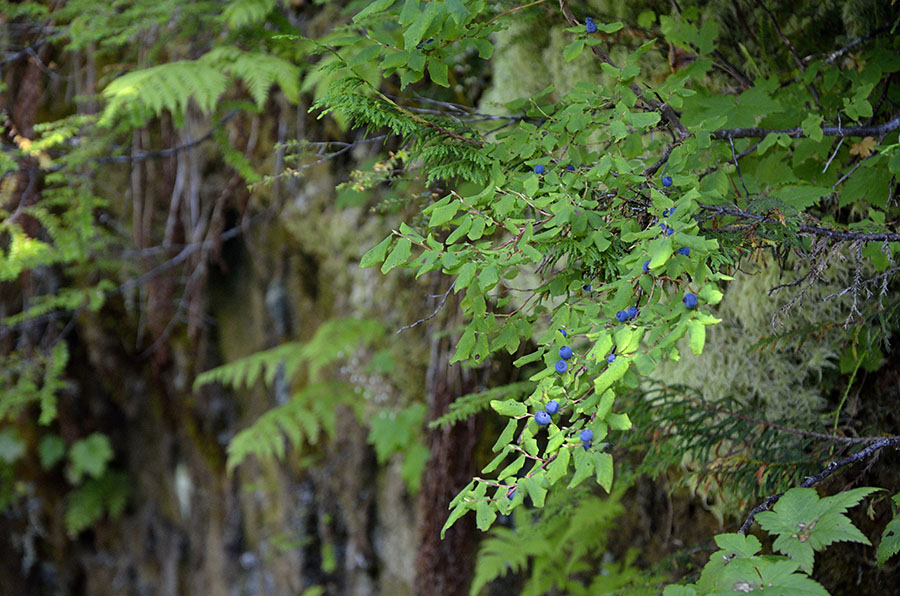Formed by the Baird and Patterson Glaciers, Thomas Bay is about 17 miles from Petersburg. Sometimes it’s easy to forget that, just because a place is close to home doesn’t mean that it isn’t something special.
To get into Thomas Bay we crossed the shallow bar – the terminal moraine of the Baird Glacier, and we headed towards the vertical mountainside. Close to the mountain we turned north to see the expanse of gravel bars that marks the outflow plain of the Baird. Turning the corner, we tucked into the aptly named Scenery Cove to drop the anchor. It’s a gorgeous little nook, but pretty deep. Fortunately we found a high spot that was big and flat enough to get a good anchor set.
So much of boating and exploring is all about “local knowledge”, and this visit to the Baird is no exception. Our hairdresser and her husband have seen us up in Thomas Bay from their boat before, so she told us that the meltwater lake in front of the Baird is accessible by boat now. We wouldn’t have tried to get closer to the face if we didn’t get that tip from Liz!
Navigating with the dinghy through opaque glacier outflow is not easy. Even though the dink doesn’t draw much water, we still ran with the outboard tilted up a bit and paused to check the depth often. I have visions of silty bars and hidden rocks ripping the lower unit off the outboard, so we proceeded slowly… and the reward was worth it!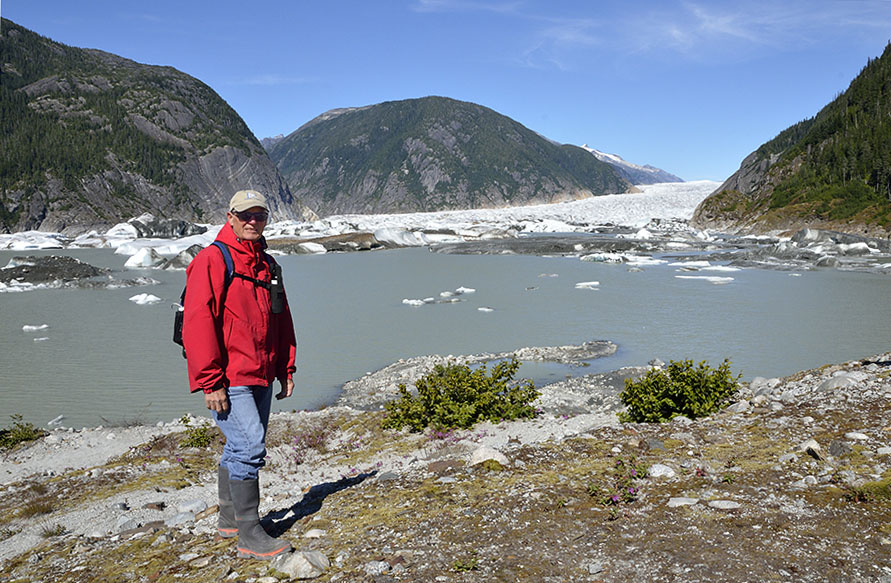 We found a safe place out of the current to anchor the dinghy on a rising tide and climbed out on a steep silty beach. Fresh bear scat and some porcupine footprints reminded us that there’s plenty of wildlife around, even though parts of the landscape looked stark and rugged.
We found a safe place out of the current to anchor the dinghy on a rising tide and climbed out on a steep silty beach. Fresh bear scat and some porcupine footprints reminded us that there’s plenty of wildlife around, even though parts of the landscape looked stark and rugged.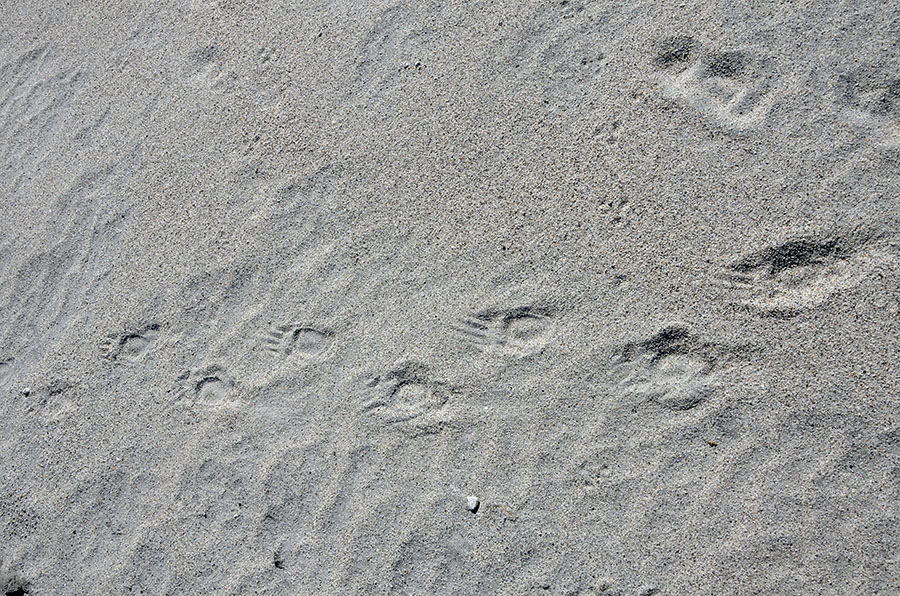
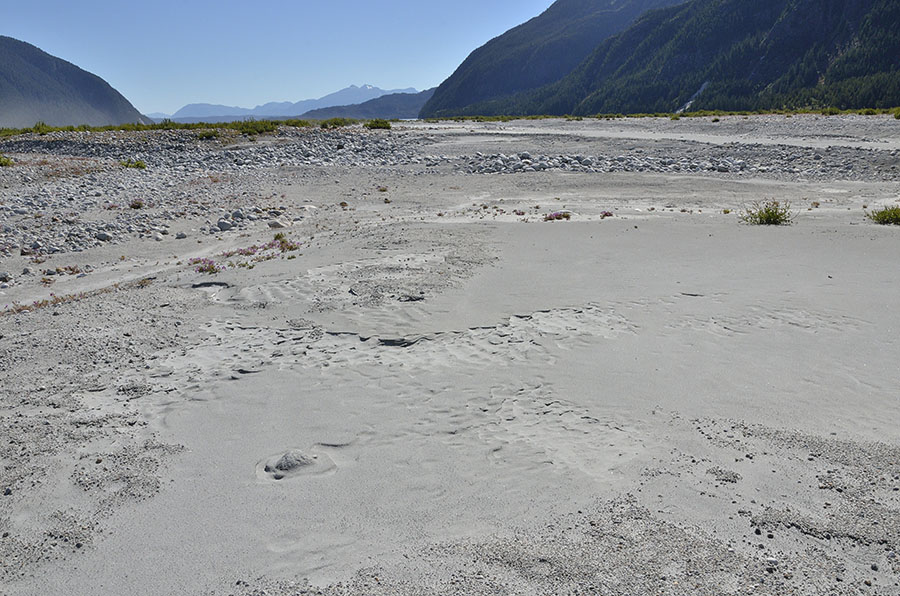 The wind kicked up clouds of fine glacial flour into the air from plains like the one in the photo above, but we also found thickets of brush and a wide variety of lichens.
The wind kicked up clouds of fine glacial flour into the air from plains like the one in the photo above, but we also found thickets of brush and a wide variety of lichens.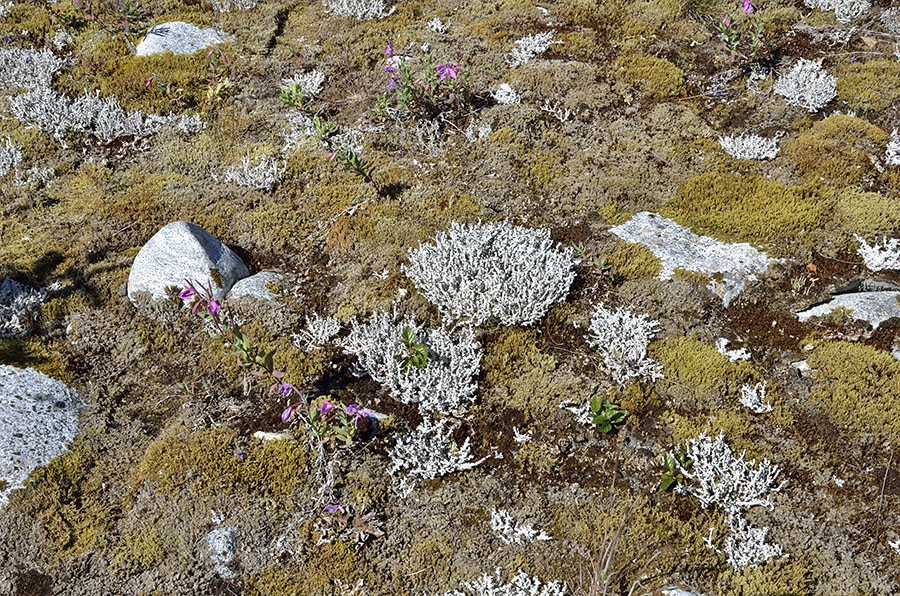 I loved these silvery swaths of lichens, dotted with pretty pink-purple dwarf fireweed…
I loved these silvery swaths of lichens, dotted with pretty pink-purple dwarf fireweed…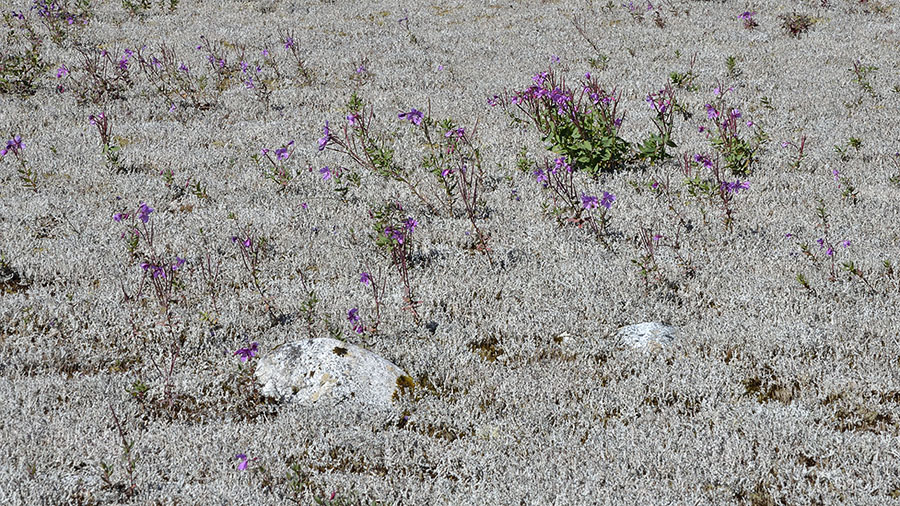 …which is a “pioneer plant” commonly found after a wildfire or glacial scour – it helps to fix nitrogen into the soil to make it more hospitable for more varieties of plants.
…which is a “pioneer plant” commonly found after a wildfire or glacial scour – it helps to fix nitrogen into the soil to make it more hospitable for more varieties of plants.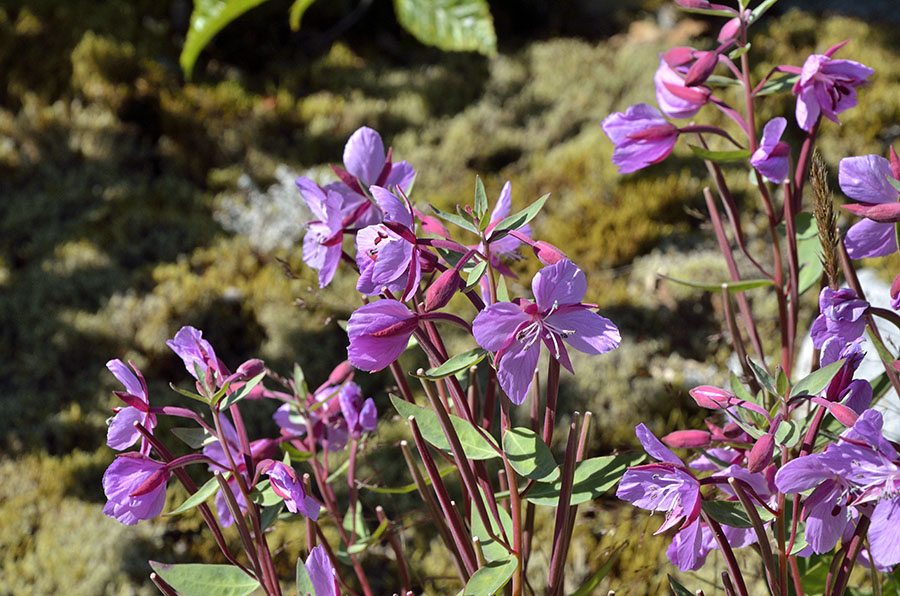 We spotted a number of small spruce trees coming up – somewhat surprising to find in this harsh looking landscape.
We spotted a number of small spruce trees coming up – somewhat surprising to find in this harsh looking landscape.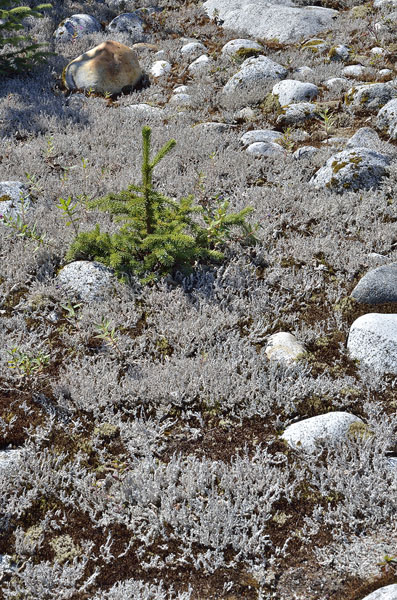 Life abounds here – including nesting birds that hide their eggs among the cobble. These are tern eggs, though we suspect they may be abandoned – we didn’t see any birds fussing at us. We were careful to watch where we walked to make sure we didn’t step on anything delicate.
Life abounds here – including nesting birds that hide their eggs among the cobble. These are tern eggs, though we suspect they may be abandoned – we didn’t see any birds fussing at us. We were careful to watch where we walked to make sure we didn’t step on anything delicate.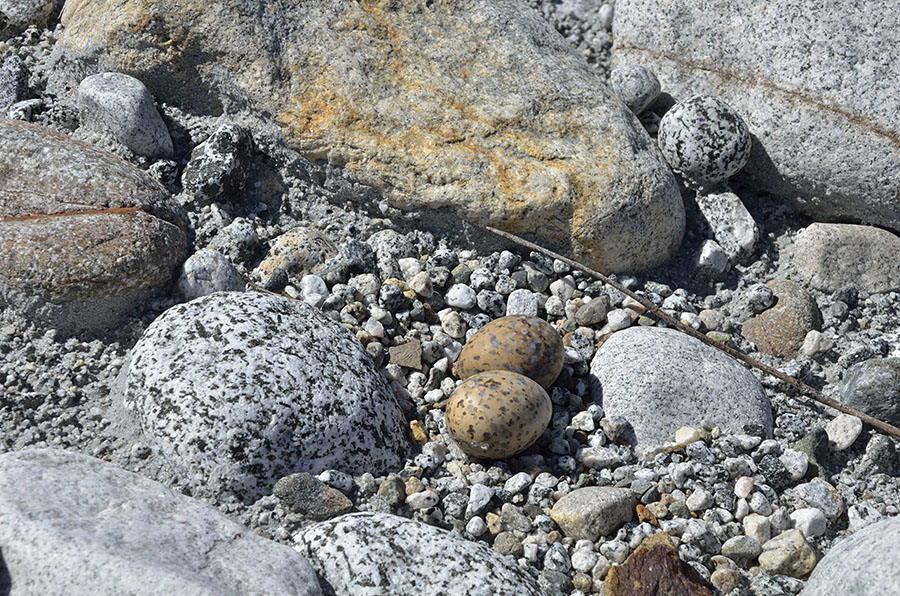 The Baird Glacier is no longer a mighty shaper of the land, but it’s still beautiful and interesting to explore its gravel bars and see the life that comes to occupy the scoured landscape it left behind.
The Baird Glacier is no longer a mighty shaper of the land, but it’s still beautiful and interesting to explore its gravel bars and see the life that comes to occupy the scoured landscape it left behind.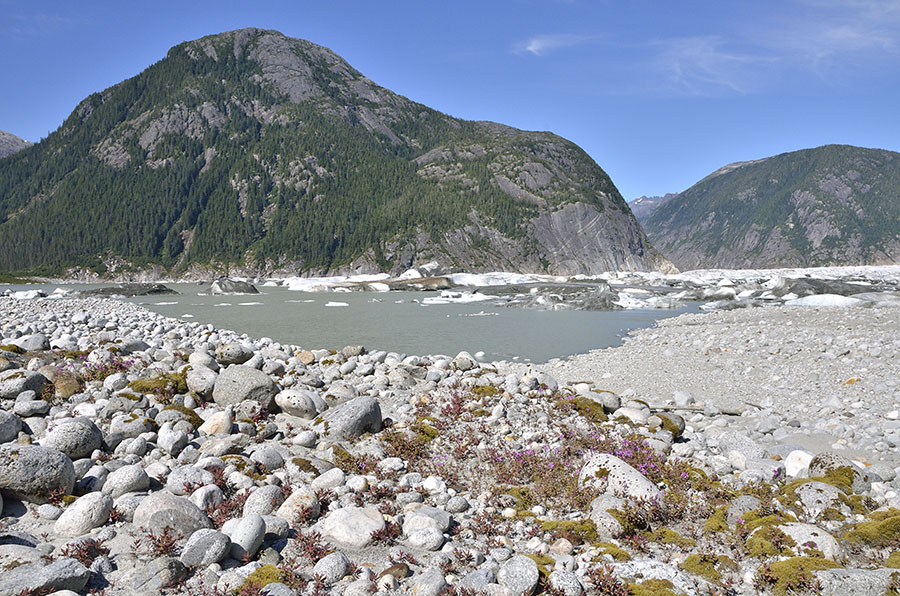 If you’d like to learn more the US Forest Service has a Baird Glacier Story Map with photos and in-depth information to explore.
If you’d like to learn more the US Forest Service has a Baird Glacier Story Map with photos and in-depth information to explore.
The day after visiting this glacier we anchored off the southern delta in Thomas Bay – left behind by the Patterson Glacier that’s now high up in the mountains. Near the anchorage is the beautiful Cascade Creek and a nice hiking trail.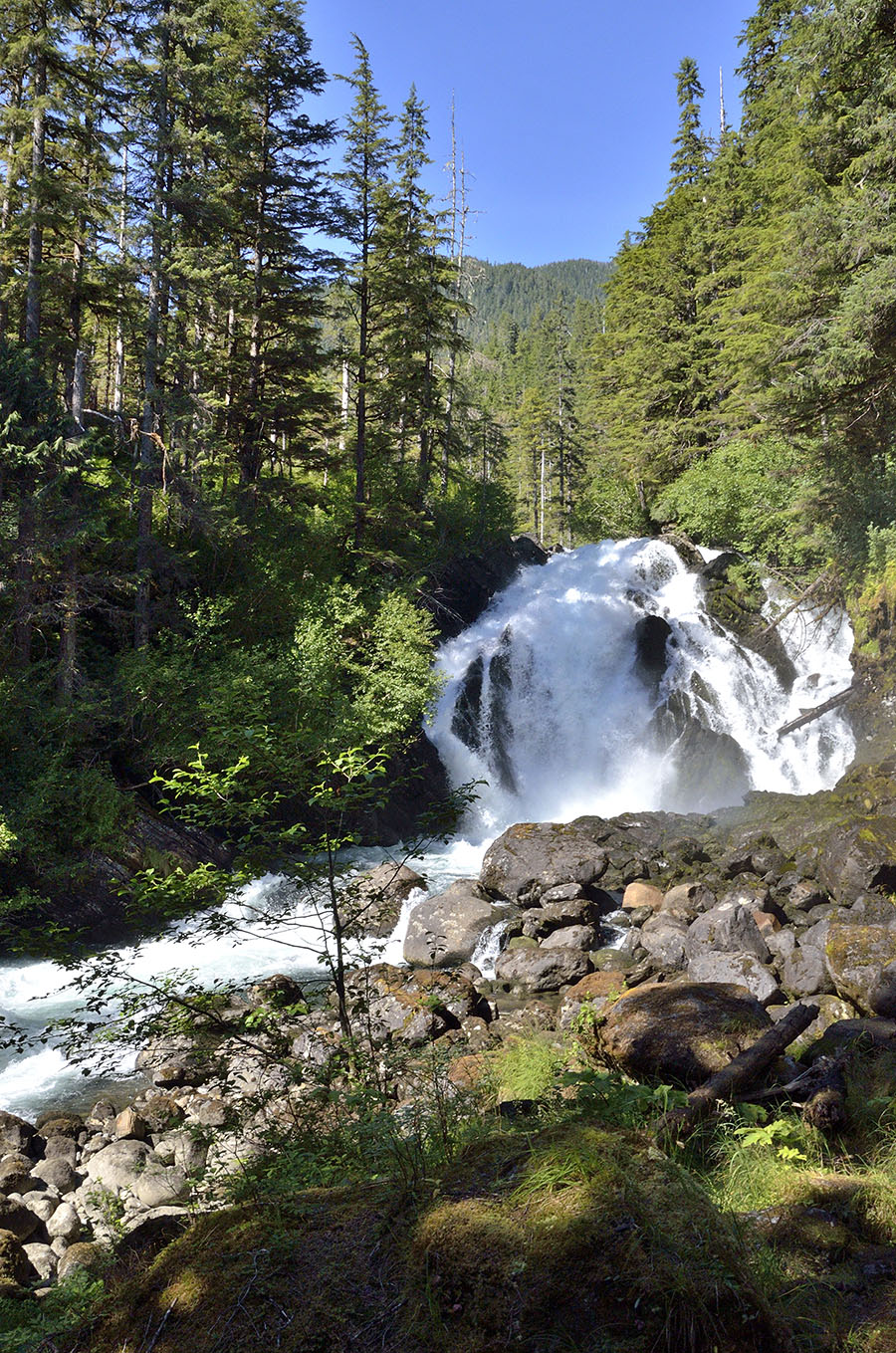 The trail follows the creek and eventually leads up to some mountain lakes, though we didn’t climb that high. I just love a good walk in the woods. The light was just right to reveal a chubby-cheeked face in the forest (exercise for the imagination).
The trail follows the creek and eventually leads up to some mountain lakes, though we didn’t climb that high. I just love a good walk in the woods. The light was just right to reveal a chubby-cheeked face in the forest (exercise for the imagination).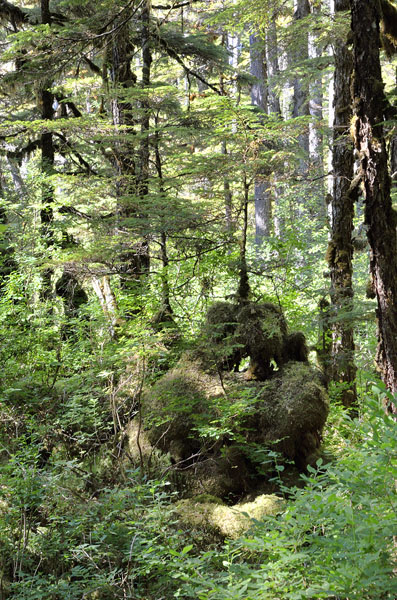 We spotted lots of ripe berries, particularly salmonberries and blueberries, but all the easy to reach ones have been taken. I have to weigh my love for berries with my desire to avoid broken bones.
We spotted lots of ripe berries, particularly salmonberries and blueberries, but all the easy to reach ones have been taken. I have to weigh my love for berries with my desire to avoid broken bones.